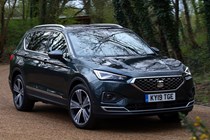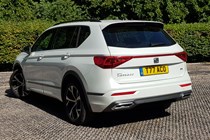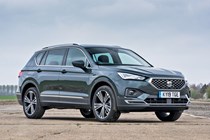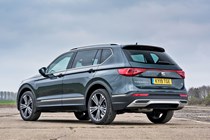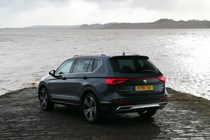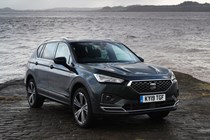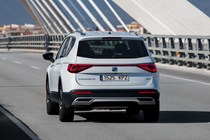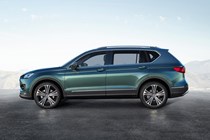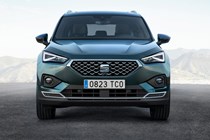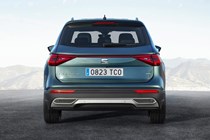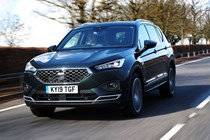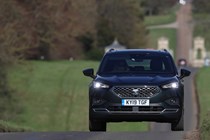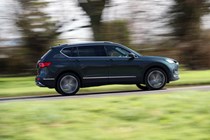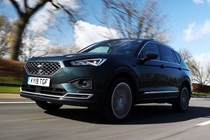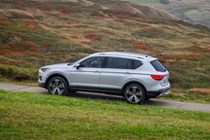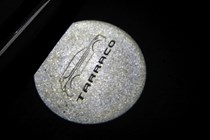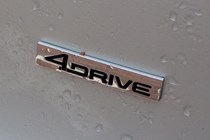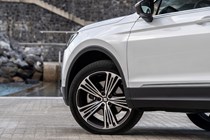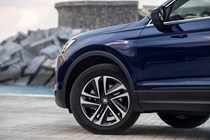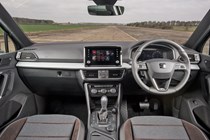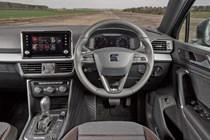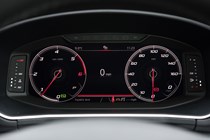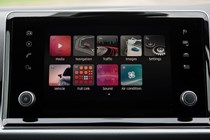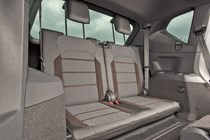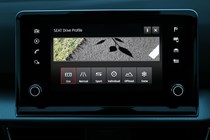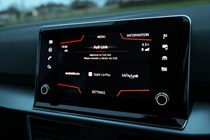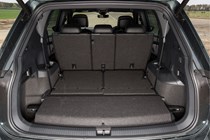
SEAT Tarraco engines, drive and performance
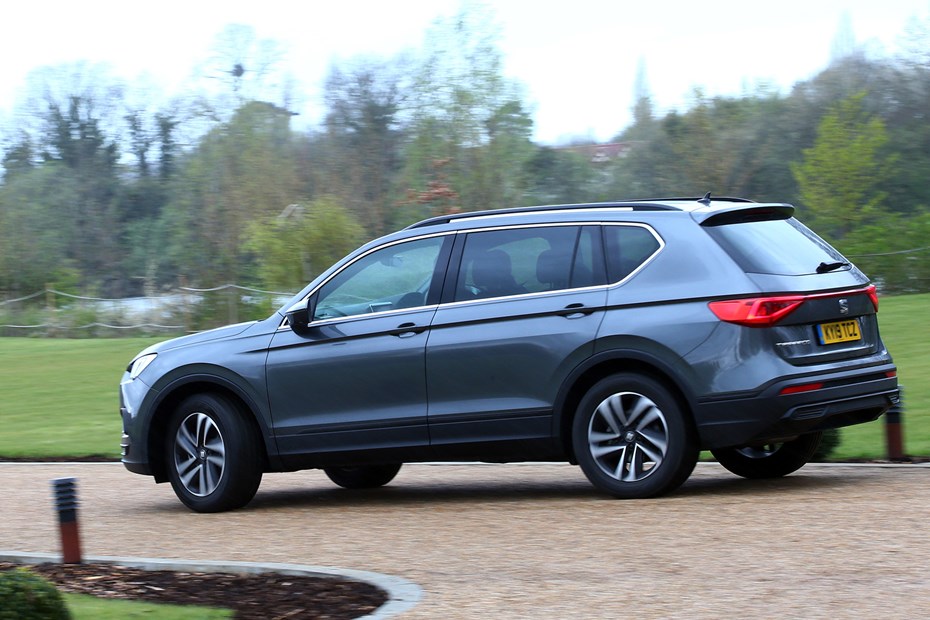
- Two petrol and two diesel engines
- A choice of manual and DSG transmission
- Entry-level petrol auto can struggle under load
The SEAT Tarraco comes with a choice of three petrol and two diesel engines. There are 150hp, 190hp and 245hp versions of the petrol, and 150hp and 200hp diesels. The eHybrid plug-in hybrid model is on its way, but isn’t on sale in the UK yet, so picking the one for you shouldn’t be too tricky a task.
Petrol engines
| Engine | Power and torque |
0-62mph time |
Top speed |
| 1.5-litre 150 | 150hp, 250Nm | 9.9secs | 124mph |
| 2.0-litre 190 | 190hp, 200Nm | 7.8secs | 130mph |
| 2.0-litre 245 | 245hp, 250Nm | 6.2secs | 142mph |
The two petrols available are a 1.5-litre TSI with 150hp and 250Nm, and 190hp or 245hp 2.0-litre TSI. The 1.5-litre is the most popular engine for the Tarraco, and as with other cars we’ve tried with this engine, it’s smooth and refined. Performance is stronger than you might expect, but the lack of torque compared with the diesels means it doesn’t have great pulling power.
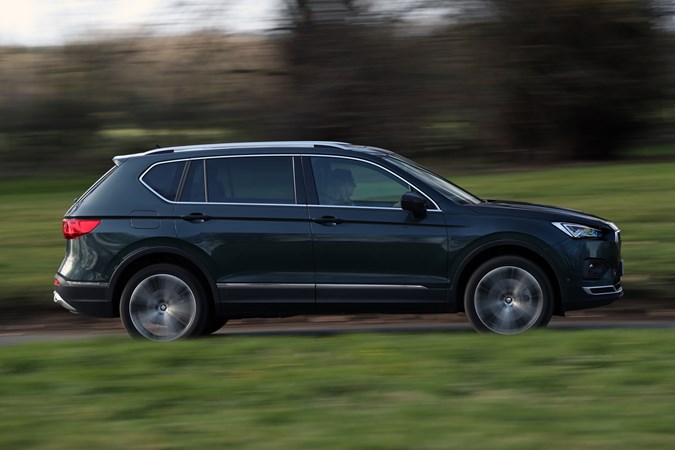
We spent a 1,000-mile week in one, and that lack of go does become a bit of a chore in this situation. This is compounded by a lazy automatic transmission that is sluggish to respond in Eco mode, and a little too eager to drop gears in Sport mode. In which case, it’s either too relaxing or not relaxing enough.
There’s stronger performance from the 190hp and 245hp petrols. However, the lower-powered 2.0-litre version is down on low-end shove compared with that car, which can be noticeable when loaded up with passengers. The DSG gearbox can also make it feel a little sluggish like it can in the diesel. This is less so with the sporty 245hp version, but you do still need to work it hard to extract rapid performance from it.
Diesel engines
| Engine | Power and torque |
0-62mph time |
Top speed |
| 2.0-litre TDI 150 | 150hp, 340Nm | 10.2secs | 124mph |
| 2.0-litre TDI 150 DSG | 150hp, 360Nm | 10.1secs | 122mph |
| 2.0-litre TDI 200 | 200hp, 400Nm | 7.8secs | 130mph |
The diesels available in the Tarraco are familiar 2.0-litre TDI units – with a choice of 150hp or 200hp. Go for the 150hp version and you’ll get a choice of a manual gearbox and front-wheel drive, or seven-speed DSG automatic and 4Drive all-wheel drive. The manual gearbox is particularly slick and easy to use, and it has strong overtaking performance, as long as you’re in the right gear.
The 200hp 2.0-litre TDI is comes exclusively with 4Drive and a seven-speed DSG transmission. In action, though, it can feel very sluggish when pulling away from junctions or at roundabouts, needing a good prod of the throttle to get the car moving – especially as it can try to move away in second gear when in Normal driving mode.
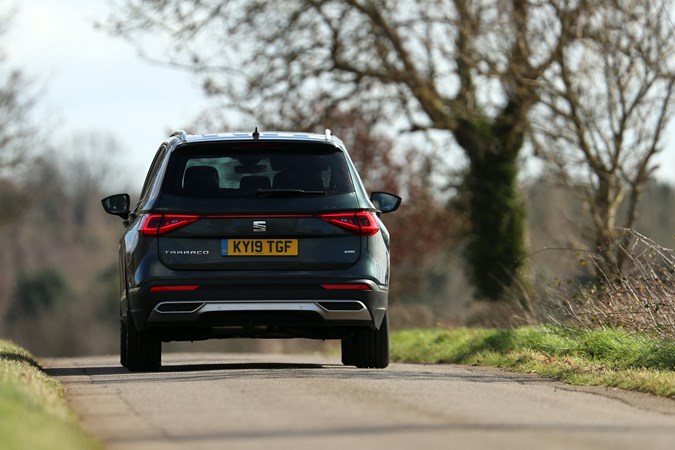
Handling
- Firmer setup than the Skoda Kodiaq
- Body control is impressive
- No adaptive suspension options
The Tarraco’s been set-up to feel more engaging to drive than its closest seven-seater rivals, with steering and suspension set-up tailored to the Spanish brand’s zesty ethos. For those who enjoy driving on B-roads, it certainly won’t be a disappointment.
The Tarraco’s steering turns into corners sharply, with a decent amount of communication about what the front wheels are up to – although its weighting is on the light side, even in Sport mode. Similarly, bodyroll is kept tidily in check, in part because the suspension’s 20mm lower than the Kodiaq’s, hunkering it down a bit.
It’s best to think of the Tarraco as being an SUV for keen drivers – at least compared with the Volkswagen and Skoda – rather than a sporty car that happens to have seven seats. Certainly in FR trim with the larger wheels and lower-profile tyres offered as standard, it feels very quick and responsive in the the bends.
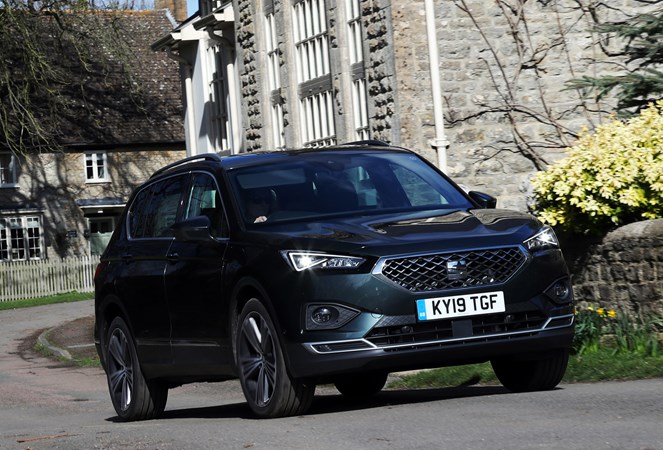
While this is all well and good in terms of feeling assured and responsive for such a large car on a smooth, twisting road, the combination of 20-inch alloy wheels on higher-spec models and less-than-perfect surfaces of UK roads means the Tarraco can tend to fidget and fuss more than we’d like. It’s never uncomfortable – far from it – but it’s worth trying the Skoda Kodiaq and Volkswagen Tiguan Allspace if your priority is outright comfort.


